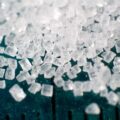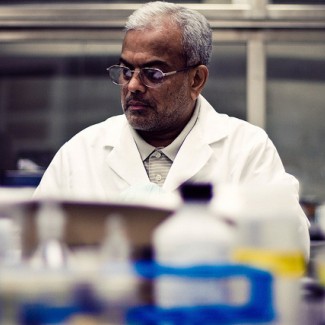Teflon – some people swear by it; others curse the name. Whether you think the substance is actually safe for frying food or a bird-killing nightmare, you must admit: Teflon lives up to its claim as an effective non-stick surface in cookware. Liquefied cheese, egg matter, and other gunky foodstuffs have no chance of sticking to a Teflon-coated pan, so you won’t have the tedious chore of cleaning them off after meals.
But saying Teflon is non-stick seems to beg the question. How do you stick a substance that is by definition non-stick to a surface? If nothing sticks to Teflon, how do they get it on pans in the first place?
This is a fair question, one that invokes the old joke about the chemist who discovers a substance that will disintegrate anything, but can’t find a container to hold it. First let’s investigate what Teflon really is to put things in perspective.
<h2>What is Teflon?</h2>
‘Teflon’ is the trade name for a chemical compound manufactured by DuPont, the folks who brought us Nylon and Kevlar. It’s been called a miracle of modern chemistry, but why? Teflon eliminates the need to ‘grease the wheels.’ Its carbon and fluorine atoms are so tightly bonded, virtually nothing can stick to the polymer, making it an excellent fluid-repellant, lubricant and protective barrier, used not only in cookware, but on fabrics, electrical insulation, windshield wipers, sports gear and more.
At room temperature, Teflon is a waxy, whitish resin – a pure, additive-free chemical with unsurpassed stability and durability. It is resistant to fire, corrosion, oxidation, abrasion, and pretty much all solvents. It defies temperatures up to 500 degrees, long after other materials have succumbed.
And yet, “resistant” is not the same as “proof.” Even mighty Teflon’s molecules can be pulled apart by sufficient heating in the kitchen. The result is off-gasing – a face-full of fluorocarbons for the chef. This is where Teflon gets its reputation for being a potential health hazard. It also suggests a solution for achieving a tight bond. If Teflon undergo changes at high-enough temperatures, then perhaps its stability can be broken down to make it adhere.
<h2>How To Make a Non-Stick Substance Sticky</h2>
Indeed, the application of heat is one way to modify Teflon long enough to make it stick. You can heat its granules to a point of softening, so that the molecules clamp together under pressure. That’s not the only way, though. Decades ago, DuPont scientists came up with several answers.
In powder form, you could blend Teflon with hydrocarbons and cold-compress it into place. You could thin it with water and then spray or brush it on. You could embed sand in the resin to increase its bonding potential. Scientists also learned to scratch some of the fluorine atoms off a Teflon surface to give it some grip.
When Teflon was first deployed as a non-stick coating for cookware in the ’60s, entrepreneurs developed a simple and efficient method for commercial production purposes: First, the metal surface of a pan is scratched with an acid to create an uneven, pitted surface. Teflon powder is applied to the surface, filling the tiny pits. Then, the metal and powder are heated almost to Teflon’s melting point, causing it to bond with the pitted metal.
At this point, you have a primer layer. Lacking chemical bonds, it’s not very strong, but it does hold. Layers of pure Teflon are then added to the primer, providing a nice dense coating with all the special non-stick, melt-resistant properties of unadulterated Teflon. This basic method is still used today to stick the famed non-stick coating to frying pans.











